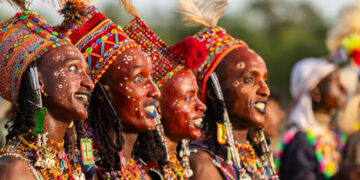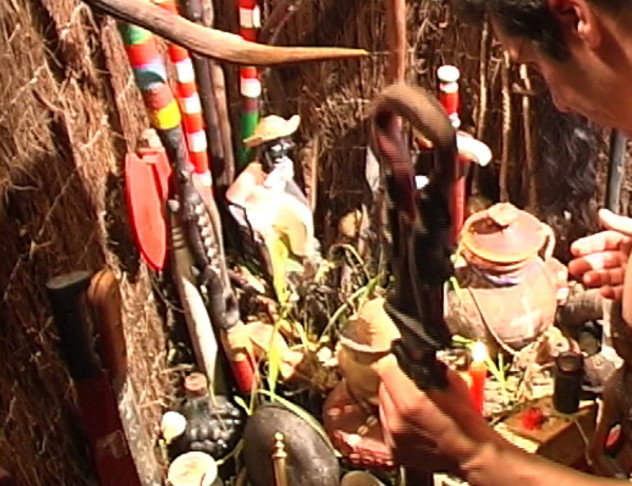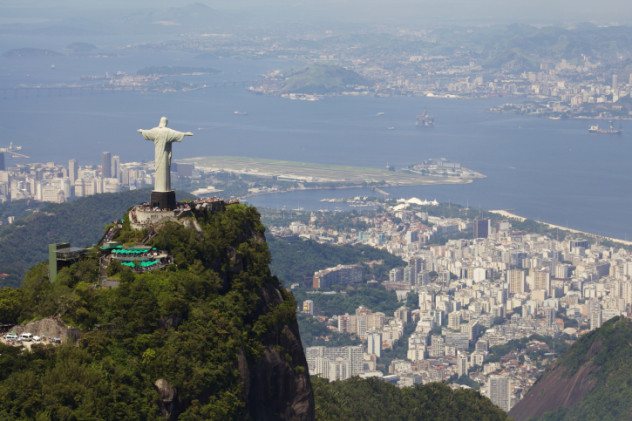1. Prison Pentecostalism
The prisons of Rio de Janeiro are controlled by violent gangs, but they have made space for the rise of Pentecostal churches in their midst. These prison churches derive their organization structure from Pentecostal churches outside prison, but also from the gangs inside the prisons. The first prison churches were called Comando de Cristo (Christ’s Command), based on the name of Rio’s largest criminal gang, Comando Vermelho (Red Command). The small groups began to grow and claim parts of the prison as their own territory. Pentecostal inmates lived together in the celas dos crentes(Believer’s Cells). Pentecostal teachings appeal to many inmates due to the emphasis on redemption, and the greater activism by Pentecostals among Brazil’s poorest populations, compared to the Catholic majority. The Pentecostalism within the prison bears a resemblance to gang life, with an adherence to strong charismatic leaders and membership in the church offering protection from threats.
These churches usually make up around 10 percent of the prison population, much smaller than the secular gangs. But the gangs respect the churches, and in turn the churches do not interfere with the gangs. Gang members are allowed to leave their gangs and join the church community, but only if their conversion is genuine. Church members are forbidden to take drugs, so if someone converts and is found to have taken them, they will be expelled from the church and suffer harsh punishment for their disloyalty from their former gang. But the balance between church and gang maintains an order within the prisons to a much greater extent than the facade of control exercised by the wardens. Some former prisoners converted to the faith return after their release to work with inmates. One inmate, Daniel Ruffinnati, credits his conversion with curing his schizophrenia and now works with a social outreach program.
Not all interactions between burgeoning Pentecostalism and the world of crime is so rosy, however. Informal, unregulated, and for-profit compulsory rehabilitation centers run by Pentecostal and Charismatic churches in Guatemala are holding drug users against their will with government approval. Filthy abandoned buildings have been turned into fortresses to house the users who are forced to maintain them while pastors make money from their families for rehabilitation. Drug users are delivered to the centers by the police or captured by collection gangs by force. With little government oversight, many of these centers are rife with physical, psychological, and sexual abuse.
David Tormsen hopes he performs posthumous miracles, but would rather not run afoul of the Mexican authorities to make it happen.
–ListVerse
CLICK HERE to join our BBM Channel for faster updates
TOP POSTS YESTERDAY
- 15 Celebrities who look exactly like another celebrity – You need to see their pictures!
- Ghanaian celebrities who are from rich homes (+Photos)
- The 10 richest football club owners & their net worth (+Photos)
- Photos that will make you look twice and get you insane..
- 10 most evil women in history of the world – You will be shocked to see their evil deeds! (+Pics)
- Official list of top 1000 richest people in the world & their worth – World’s billionaires
- Top 20 health tips for stronger and longer erection
- Top 10 most beautiful African first ladies – Number 1 is a princess! (+Photos)
- The moment Tinubu’s wife, Remi Tinubu embarrassed Senate president, Saraki (+Photo)
- Top 10 Richest wrestlers in the world and their worth 2015 – See who’s #1 (+Pics)





































Discussion about this post